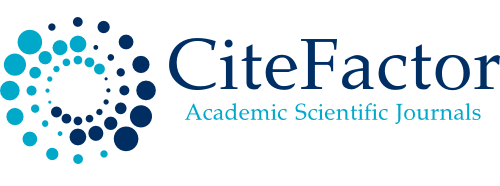Sales Promotion Tactics in Retailing: Fair vs Unfair
DOI:
https://doi.org/10.61841/z12a7n56Keywords:
Channel Partner, Promotion Tactics,, Moral conduct,, Untruthful advertisingAbstract
Today’s customer evaluates the pros and cons of every offering / scheme available in the market before making the final purchase decision. But still there are various offerings which create confusion in the kinds of the customer / channel partner and they are duped by the same. Some of these offerings are meant to increase the sales of the end product directly. In the designs of the posters, the word up to is shown in such a small size that it creates illusion in the mind of the end customer. They are attracted towards the store and when they visit there, they are forced to buy even some of the unplanned products thus earning huge benefits for the retailers. And some of the customers return empty handed because the offers are not meant for the products in which they are interested in. Ethics is one of the most important aspect of behavior and social sciences dealing with what is right and what is wrong. This paper discusses the concept that how the facts are twisted in the advertisements and promotions. What is the effect of this untruthful advertising on the customers / visitors and various laws related to these behavior of marketers.
Downloads
References
1. Barnett, Tim, Bass, Ken, Brown, Frederick, and Hebert, J. (1998). "Ethical Ideology and the Ethical Judgments of Marketing Professionals." Journal of Business Ethics May: 715-723.
2. Berman, Barry, and Evans, Joel R. (1998). Retail Management: A Strategic Approach, 7th ed. New York: Prentice Hall.
3. Bone, Paula F., and Corey, Robert J. (1998). "Moral Reflections in Marketing." Journal of Micromarketing Fall: 104-114.
4. Ferrell, O. C., Hartline, Michael D., and McDaniel, Stephen W. (1998). "Codes of Ethics Among Corporate Research Departments, Marketing Research Firms, and Data Subcontractors: An Examination of a Three- Communities Metaphor." Journal of Business Ethics April: 503-516.
5. Jones, Thomas M., and Ryan, Lori V. (1998). "The Effect of Organizational Forces on Individual Morality: Judgment, Moral Approbation, and Behavior." Business Ethics Quarterly July: 431-445
6. Kotler, Philip, and Armstrong, Gary. (1999). Principles of Marketing, 8th ed. New York: Prentice-Hall.
7. Mahoney, Ann I. (1999). "Talking About Ethics." Association Management March: 45.
8. Murphy, Patrick E. (1998). "Ethics in Advertising: Review, Analysis, and Suggestions." Journal of Public Policy and Marketing Fall: 316-319.
9. Personal survey conducted in the market of Bathinda, Punjab, India
10. Self-Regulatory Guidelines for Children's Advertising. (1997). New York: Children's Advertising Review Unit of the Council of Better Business Bureaus.
11. Singh, A., Jain. A., & Singla, B. (2019). “Technological Advancement-Based Paradigm
12. Shift: A Focus Shift from Large Screen to Small Screen”, International Journal of Innovative Technology and Exploring Engineering, 8(10).
13. Singla, B. & Singh, A. (2019). “Contract Manufacturing: The Boon for Developing Economies”, International Journal of Innovative Technology and Exploring Engineering, 8(12)
Downloads
Published
Issue
Section
License

This work is licensed under a Creative Commons Attribution 4.0 International License.
You are free to:
- Share — copy and redistribute the material in any medium or format for any purpose, even commercially.
- Adapt — remix, transform, and build upon the material for any purpose, even commercially.
- The licensor cannot revoke these freedoms as long as you follow the license terms.
Under the following terms:
- Attribution — You must give appropriate credit , provide a link to the license, and indicate if changes were made . You may do so in any reasonable manner, but not in any way that suggests the licensor endorses you or your use.
- No additional restrictions — You may not apply legal terms or technological measures that legally restrict others from doing anything the license permits.
Notices:
You do not have to comply with the license for elements of the material in the public domain or where your use is permitted by an applicable exception or limitation .
No warranties are given. The license may not give you all of the permissions necessary for your intended use. For example, other rights such as publicity, privacy, or moral rights may limit how you use the material.









